A prosperous future requires pre-emptive planning
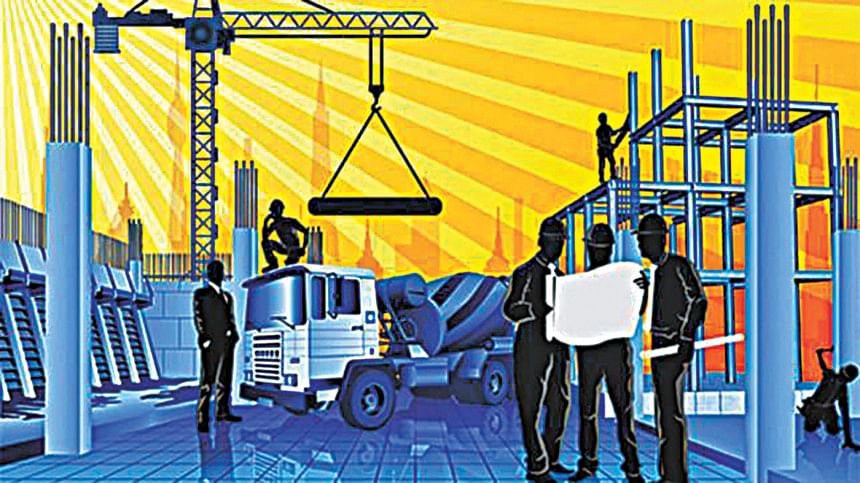
Bangladesh faces a challenge: balancing development with resource limitations. One major issue is the rising infrastructure costs due to land scarcity. Elevated or underground structures are often needed to avoid encroaching on agricultural land and water bodies, which at-grade structures would otherwise have an impact, increasing financial strain. Strategic planning and innovative solutions for real needs are crucial for sustainable growth.
Bangladesh's construction costs are significantly higher than in many other countries, primarily because we import almost everything, including stones. To reduce dependence on foreign technology and materials, developing our local manpower is essential.
Bangladesh's population, currently 170 million, is expected to stabilise before gradually declining. Careful planning based on a "design population" is essential to ensure future infrastructure needs are met efficiently with balance across the geographical jurisdiction. A thorough assessment of current resources and a gap analysis will help policymakers develop long-term strategies that accommodate demographic changes.
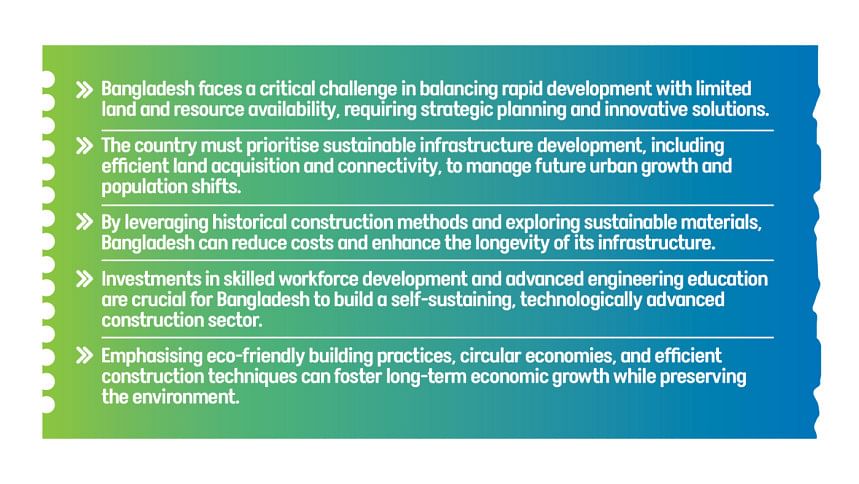
STRATEGIC LAND USE AND URBAN DEVELOPMENT
Some projects may seem premature but are crucial for preventing chaotic urban sprawl. Without foresight, future development becomes costlier and more difficult. Pre-emptive construction in developing areas enables controlled expansion, reducing congestion and unplanned settlements.
Land acquisition remains a major hurdle. Expanding highways is difficult due to rising land prices from rapid urbanisation through the construction of the first highway. In Thailand, roads are designed with reserved land in the central median, preventing unauthorised occupation and reducing future costs of acquiring a developed highway shoulder. Bangladesh should adopt similar strategies to facilitate long-term infrastructure development while minimising acquisition challenges.
TRANSPORTATION AND CONNECTIVITY EXPANSION
Airports require extensive land planning. Dhaka Airport's second runway expansion is now looking for manoeuvring due to urban encroachment. A pre-planned air funnel could have eased the bottleneck. Land usage planning is vital to avoid such constraints. If future airport expansions are anticipated, securing adjacent land and airspace should be a priority to prevent logistical and financial roadblocks. Haneda Airport in Tokyo was extended over Tokyo Bay. The Tokyo Bay Aqua Line had to be constructed in a combination of tunnel and bridges to save Haneda Airport airspace.
Rural connectivity is also crucial. Many rural roads are poorly planned due to land acquisition challenges, reducing overall transport efficiency. A well-planned rural road network supports economic development and maximises national highway investments. Small roads should be designed for smooth traffic flow, avoiding unnecessary bends and inefficiencies caused by land disputes.
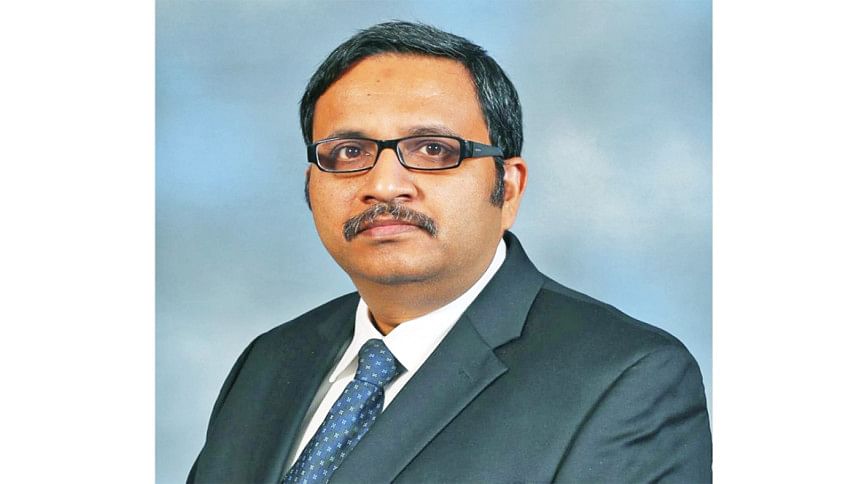
NATIONAL INVESTMENT GOALS
Transportation and education are key to national progress. Investments in these areas yield high returns. Improved transport networks enhance economic opportunities by linking rural areas to urban markets, boosting trade and tax revenue. Strengthening these networks not only enhances mobility but also fosters a more equitable distribution of economic benefits.
Infrastructure projects connect North and South Bengal, but micro-communication networks remain underdeveloped. A comprehensive master plan integrating land acquisition, population trends, and future expansion is needed. Ensuring that infrastructure is designed with flexibility for future modifications will help accommodate evolving needs.
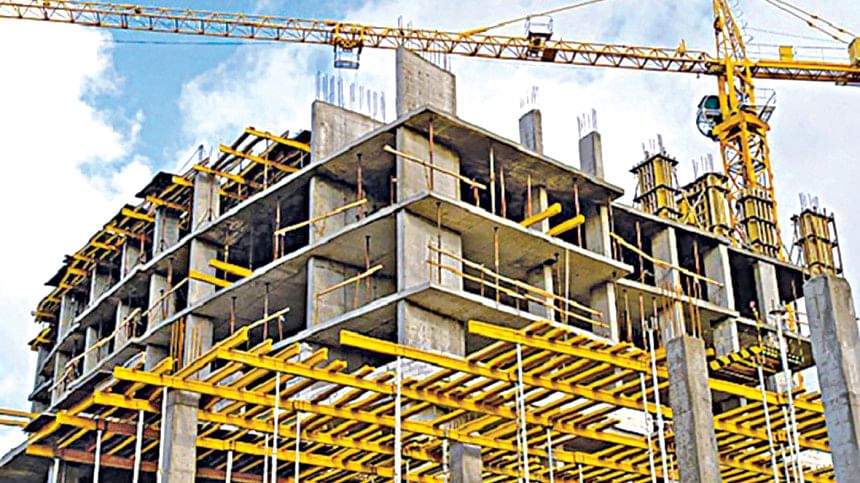
ECONOMIC GROWTH THROUGH TOURISM AND INDUSTRY
Tourism can be a major economic driver in a stable society with enforced law and order. Bangladesh has rich archaeological sites that still remain inaccessible. Proper conservation and promotion can attract international tourists, creating demand for hotels, transport, and services, fuelling economic growth. Investments in tourism infrastructure can generate significant revenue and create employment opportunities in related sectors.
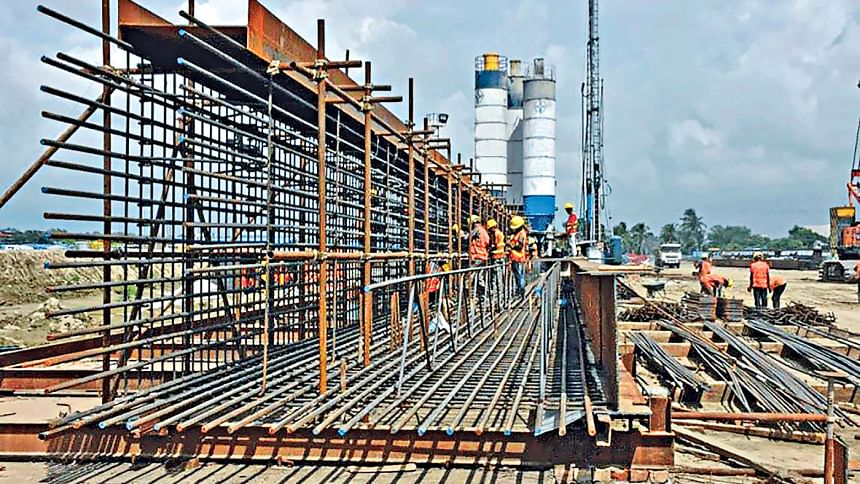
SUSTAINABLE CONSTRUCTION AND MATERIALS
Bangladesh has limited stone resources. Historical structures used bricks, while modern projects rely on expensive imported stone. Efficient use of local materials is essential for cost-effective construction. Many sites, such as the Shat Gombuj Mosque and Mahasthangarh, have survived for centuries due to superior construction techniques of that time. However, more recent construction often sacrifices quality for speed, leading to shorter lifespans. Research into historical methods can improve durability and sustainability through relearning, ensuring that new structures maintain long-term resilience. Prioritising sustainable use of locally available materials can reduce reliance on imports and lower construction expenses.
At this stage of development, reducing reliance on bricks is critical. Brick production damages agricultural land and harms the environment. Alternative materials like compressed earth blocks and lime-pozzolan-concrete should be explored. Historically, lime concrete was widely used before cement became dominant, offering a more environmentally friendly alternative to current methods.
Until the Jamuna Bridge project, Bangladesh had only two cement factories. Now, cement and brick aggregate use has surged, though brick aggregate concrete is proven to be less resilient in disasters. The Rana Plaza collapse highlighted its risks. Reducing brick usage in high-rises is necessary to enhance structural safety and longevity.
At this stage of development, reducing reliance on bricks is critical. Brick production damages agricultural land and harms the environment. Alternative materials like compressed earth blocks and lime-pozzolan-concrete should be explored.
Heavy brick walls increase structural costs and earthquake loads. Dry partition walls and lighter materials should be considered. Internationally, wood is a common alternative. Importing wood from reforested regions could be a sustainable option. Encouraging innovative construction techniques that use sustainable materials can also promote environmental conservation.
Scientific research on historical construction techniques is necessary to rediscover durable and sustainable practices. Many ancient structures in Bangladesh have stood for centuries due to superior materials and craftsmanship. Integrating traditional methods with modern engineering can enhance construction quality while preserving historical integrity.
A holistic approach to land acquisition, transport planning, and material use will support Bangladesh's long-term development. By leveraging historical knowledge and implementing sustainable strategies, the country can balance economic growth with environmental conservation and infrastructure resilience.
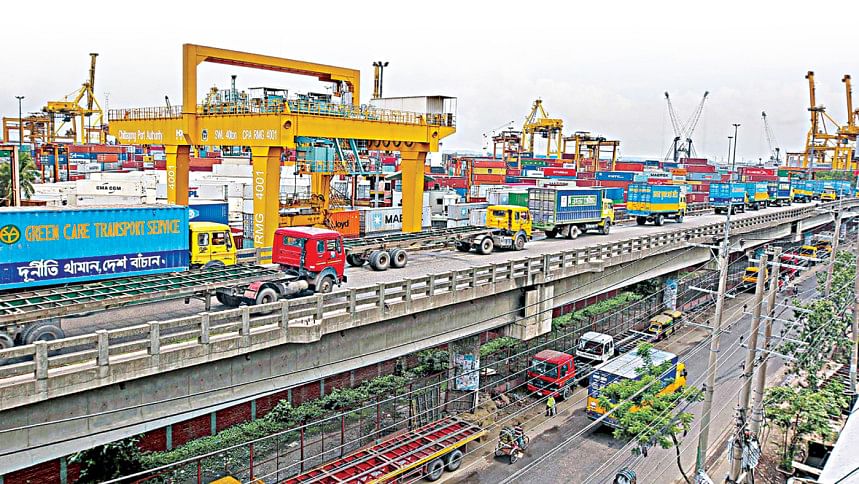
INNOVATION AND SKILLED WORKFORCE DEVELOPMENT
One modern technology gaining traction, with roots in earlier practices, is Cross Laminated Timber (CLT). CLT is a type of processed wood suitable for construction. Processed wood offers several advantages: it is lighter, and its carbon footprint is very low. Furthermore, it is 100 percent recyclable. Wooden walls provide excellent soundproofing, and international fire resistance codes exist for them. If designed correctly, CLT can achieve high fire resistance ratings. Another advantage is that future building modifications can incorporate the existing wood, adding thickness or repurposing it for other uses, such as furniture or paper. Wood offers hundreds of uses and recycling possibilities, unlike bricks. While bricks have potential for use as supplementary cementing material, further research is needed. This would allow us to use cement and steel more judiciously. Cement is a technology, and using it efficiently and reducing its use contributes to green engineering. Steel can also be used in green engineering. This approach could reduce concrete usage, with wood taking its place. These opportunities are within our reach. We would, of course, not cut down our forests; we would import wood, taking advantage of international trade opportunities. This approach ensures environmental sustainability.
Next, we need to focus on rapid construction techniques. This requires a skilled and properly enforced labour force. With a suitable industrial and institutional framework, we can address inequalities in the sector. This means formalising the entire construction sector. Expensive constructions, in terms of lifecycle cost, are a major problem. For example, if a structure built with five units of money lasts for five years, while one built with 10 units lasts for 20 years, the cheaper option is ultimately more expensive. However, we often lack this long-term perspective. We might not be able to afford the initial cost of the 10-unit construction and opt for the five-unit one, leading to increased lifecycle costs. This is particularly evident with concrete.
Research has revealed instances of extremely low-strength concrete being used on construction sites. Even when trying to replicate this in a lab with suboptimal methods, it was difficult to achieve such low strengths. This points to non-engineered construction, where anything can happen, and minimum standards remain severely unsatisfied. Substandard materials in non-engineered construction can lead to unexpected failures. For example, concrete mixing water should be potable, though not necessarily distilled. While pond water, though non-potable, might contain fines that create a large surface area for cement bonding, insufficient cement can result in very low-strength concrete. This type of construction creates significant problems.
Formal construction, using prefabrication, can help ensure minimum quality standards. Labour can be controlled, and consistent quality materials can be guaranteed. SPC poles, for example, are prefabricated concrete products with strict quality control and assurance processes before on-site installation. Mass-scale production is possible. Similarly, in other countries, construction elements like walls, columns, beams, and slabs are prefabricated in certified factories, then transported to the site for installation using mechanical equipment, enabling rapid construction.
BUILDING A RESILIENT AND SUSTAINABLE FUTURE
The time value of construction is crucial. If a house that previously took five years to build can now be completed in one year, the occupants can move in four years earlier. This unlocks productive benefits, giving a significant advantage to the consumer. Construction also becomes less expensive in the long run, even if the initial cost is higher. Old houses in London are still in use, while our houses often need demolition and rebuilding after a relatively short time. Demolition and rebuilding raise the issue of debris management. We need to think about recycling waste to reduce the carbon footprint.
Even in existing constructions, there's a huge opportunity to recycle materials for future prefabricated construction projects, creating a circular economy. Demolition waste management is another area where we need to improve. Recovering and recycling materials brings them back into the construction loop through prefabricated construction. Establishing a back-to-back linkage process in these areas will lead to higher quality construction. People will appreciate engineers for creating durable homes, bridges, and roads that last for generations. Recycling also leads to cost reduction. Materials that are considered zero value today can be reclaimed and sold tomorrow at a nominal value, almost equal to that of a brand-new product. Without recycling, new materials must be purchased at a higher cost, reducing the value addition. The value addition in materials is substantial because they can be reclaimed at minimal cost and sold at maximum cost. However, these recycling loops are not yet fully established in Bangladesh.
Some progress has been made in ready-mix plants, and efforts are being made to encourage this practice, but it is not yet institutionalised. Using recycled concrete as aggregate, for example, could reduce the use of imported stones. Demolished concrete can potentially be used for this purpose. These processes need to be incorporated into the institutional framework. Many people are likely already doing this, but not publicly. Positive work might be happening covertly due to a lack of clear legal frameworks showing the way to practice research findings. Without proper legal coverage, good work can sometimes be obscured. Clear national standards for recycling policies would be highly beneficial, outlining how and which materials to recycle. The absence of such policies hinders progress.
EDUCATION FOR SKILLED WORKFORCE DEVELOPMENT
The current generation is moving towards prefabricated construction, which requires a skilled workforce. However, a shortage of skilled workers exists. While there is a workforce, many from the younger generations, like Gen Z and Gen Alpha, are undereducated or informally educated. They demonstrate their capabilities with their existing education, but what is needed is the wisdom of those who have proven successful, blended into an institutional setup. These new generations need to be integrated into a skilled workforce. Comparing the population growth rates of Japan and Bangladesh highlights the issue. Japan has a negative growth rate, while Bangladesh has a positive one. One-third of Bangladesh's 171 million population is young, while only 14 percent of Japan's 125 million population is young. In Japan, 0.9 million young people enter quality tertiary education annually, compared to a much lower percentage in Bangladesh. The number of engineers is even smaller. While we take pride in the good graduates produced by a few public and private universities, their numbers are insufficient to meet the country's prospective needs. A large fraction of small-skilled workforce transformation is absorbed by the international market, not keeping a margin for domestic development works. We also export a large fraction of unskilled workers abroad.
We rely on remittances, but how much can we expect from sending our citizens abroad for low-wage jobs? If we could train skilled engineers and other high-skilled workers, manpower export would be far more rewarding, and remittances would increase significantly. Currently, we export manpower like raw leather, without adding much value. If we don't address this locally, we cannot fully leverage our demographic dividend. Skill development, from school and college levels through to higher education, is crucial. Without this, manpower export will not be truly rewarding. If we don't prioritise this in the country's interest, we will forever import expensive foreign technologies and foreign experts without developing our own. Even with new technology, we won't have the capacity to understand or manage it without a limited local skilled workforce. Our engineers, even with training, might not be retained due to a lack of domestic capacity.
With a local workforce, we could learn more and enhance our technology absorption capacity. The next time, we wouldn't need to buy technology—we could build it locally, using local materials and manpower. Bangladesh's construction costs are significantly higher than in many other countries, primarily because we import almost everything, including stones. To reduce dependence on foreign technology and materials, developing our local manpower is essential. Demonstration projects for every construction undertaking are crucial for our engineers, technologists, and students to absorb technology and handle future projects themselves. A national strategy is needed to upskill them.
INTERNATIONAL RECOGNITION OF ENGINEERING EDUCATION
Engineering education is crucial. The Institution of Engineers, Bangladesh (IEB) is now a full signatory of the Washington Accord, achieved in June 2024. This is a major milestone for engineering in Bangladesh, granting international recognition to our engineering education system at the tertiary level. Accredited programmes in Bangladesh will be recognised in 24 other countries, top influencers in engineering and technology, enabling global mobility for engineers.
We must now focus on upskilling engineers and ensuring their industry exposure in accredited academia with enough industry linkages. Quality and number of workforce, both matter. Mandatory internships and real-world learning experiences are key to achieving this. Without a skilled workforce and sustainable infrastructure development, we will struggle to build a prosperous future. The challenges are significant, but the opportunities are greater. By embracing innovation and investing in people, we can create a sustainable and thriving Bangladesh for generations to come.
Transcribed by Monorom Polok.

 For all latest news, follow The Daily Star's Google News channel.
For all latest news, follow The Daily Star's Google News channel. 



Comments